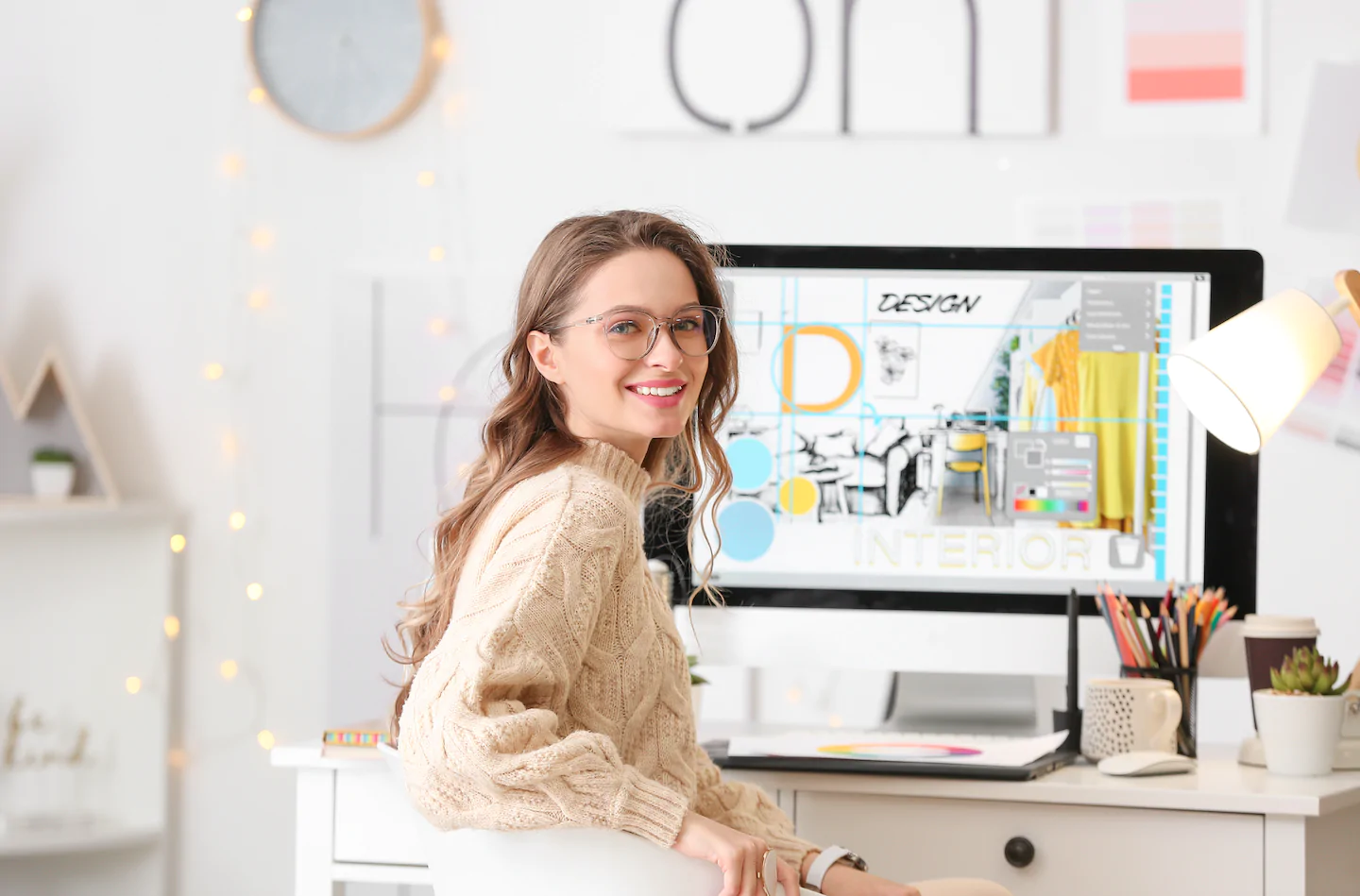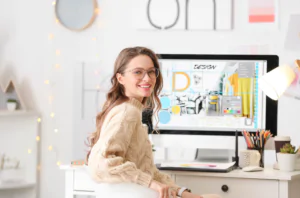
In the digital age, where screens dominate our lives, print design remains a powerful medium for communication. Whether it’s a business card, brochure, poster, or magazine, print materials create a tangible connection with the audience. However, designing for print involves a unique set of challenges and considerations that differ significantly from digital design. To achieve stunning results in print, designers must master a blend of creativity, technical knowledge, and attention to detail. In this blog, we’ll explore the best practices for designing impactful print materials, ensuring your work stands out and delivers its intended message effectively.

Understanding Print Basics
Before diving into design specifics, it’s essential to grasp the fundamental differences between print and digital media. Print design requires meticulous attention to resolution, color modes, typography, and layout to ensure the final product is both visually appealing and functional.
- Resolution
Resolution is a critical factor in print design. Unlike digital displays, which typically require 72 PPI (pixels per inch), print materials demand a higher resolution of 300 DPI (dots per inch) for crisp, clear images. Low-resolution images may appear pixelated or blurry when printed, detracting from the overall quality of the design. Always use high-resolution images and graphics to maintain sharpness and detail.
- Color Modes
Color reproduction is another area where print and digital media diverge. Digital screens use the RGB (Red, Green, Blue) color mode, while print materials rely on CMYK (Cyan, Magenta, Yellow, Black) color mode. Designing in CMYK ensures that the colors you see on your screen closely match the printed result. Additionally, consider using Pantone colors for spot color printing, which provides consistent and accurate color reproduction.
Layout and Composition
Effective print design requires a keen eye for layout and composition. A well-structured design guides the reader’s eye, highlights important information, and creates a visually pleasing experience.
- Grid Systems
Using a grid system is a fundamental practice in print design. Grids provide a framework for organizing content, ensuring alignment and consistency throughout the design. They help maintain balance and hierarchy, making the design more cohesive and easier to navigate. Whether you’re designing a single-page flyer or a multi-page magazine, grids are invaluable tools for structuring content.
- White Space
White space, or negative space, is the empty area around elements in a design. It’s a crucial component that prevents a design from feeling cluttered and overwhelming. Adequate white space improves readability, emphasizes key elements, and enhances the overall aesthetic appeal. Resist the temptation to fill every inch of the page; instead, use white space strategically to create a clean, elegant design.
- Hierarchy
Visual hierarchy guides the reader’s eye through the content, highlighting the most important elements first. Establishing a clear hierarchy involves varying the size, weight, and placement of text and graphics. Headlines, subheadings, and body text should be distinctly different in size and style. Use contrasting colors and fonts to create emphasis and draw attention to key information.
Typography
Typography plays a pivotal role in print design, influencing both readability and aesthetics. Selecting the right fonts and using them effectively can elevate your design and ensure your message is communicated clearly.
- Font Selection
Choose fonts that align with the tone and purpose of your design. Serif fonts, with their traditional, formal feel, are often used for body text in print materials like books and newspapers. Sans-serif fonts, with their modern, clean appearance, are ideal for headlines and contemporary designs. Avoid using too many fonts in one design; two or three complementary fonts are usually sufficient.
- Readability
Readability is paramount in print design. Ensure that your text is legible by considering factors such as font size, line spacing, and contrast. Body text should be at least 10-12 points, while headlines should be significantly larger to create a clear distinction. Maintain adequate line spacing (leading) to avoid a cramped look and ensure comfortable reading. High contrast between text and background colors enhances readability, especially for longer passages of text.
- Kerning and Tracking
Kerning (adjusting the space between individual characters) and tracking (adjusting the overall spacing of a group of characters) are essential for fine-tuning typography. Proper kerning ensures that letters fit together harmoniously, preventing awkward gaps or overlaps. Tracking affects the overall density of the text, influencing readability and aesthetic balance. Pay attention to these details to achieve polished, professional typography.
Choosing the Right Paper
The choice of paper can significantly impact the look and feel of your print design. Paper comes in various weights, textures, and finishes, each suited to different types of projects.
- Paper Weight
Paper weight is measured in GSM (grams per square meter). Heavier paper (e.g., 200-300 GSM) is more durable and often used for business cards, postcards, and covers. Lighter paper (e.g., 80-120 GSM) is suitable for flyers, brochures, and internal pages of books or magazines. Consider the purpose and desired durability of your print material when selecting paper weight.
- Texture and Finish
The texture and finish of the paper contribute to the tactile experience of print materials. Smooth, glossy finishes enhance colors and create a polished look, ideal for high-impact visuals. Matte finishes offer a softer, more sophisticated appearance, reducing glare and improving readability. Textured papers, such as linen or laid finishes, add a unique tactile element, making the design feel more luxurious and memorable. Choose a paper texture and finish that complements your design and enhances the overall sensory experience.
Print Specifications and Bleeds
Understanding print specifications and incorporating bleeds are crucial for ensuring your design prints correctly and professionally.
- Print Specifications
Work closely with your printer to understand their specific requirements, including file formats, resolution, color profiles, and margins. Providing your printer with accurate print-ready files minimizes the risk of errors and ensures the final product meets your expectations.
- Bleeds
Bleeds are essential for designs that extend to the edge of the paper. Adding a bleed area (typically 0.125 to 0.25 inches) beyond the trim edge allows for slight variations during the cutting process, preventing unwanted white borders. Design your artwork to include this bleed area, ensuring that backgrounds and images extend beyond the trim line. This practice guarantees a clean, professional edge on the final printed piece.
Prepress and Proofing
Before sending your design to print, thorough prepress checks and proofing are essential to catch any potential issues.
- Prepress Checks
Conduct a comprehensive prepress check to ensure your design is print-ready. Verify that all images are high resolution (300 DPI), colors are in the correct CMYK mode, and fonts are embedded or outlined. Check for any spelling or grammatical errors and confirm that all elements are correctly aligned and within the designated margins.
- Proofing
Proofing allows you to review a sample of the printed material before the final print run. Digital proofs can provide a general idea of how the design will look, but physical proofs offer the most accurate representation. Examine the proof carefully for color accuracy, image quality, and overall layout. Make any necessary adjustments and approve the proof before proceeding with the full print run.
Incorporating Special Techniques
Special printing techniques can add an extra layer of sophistication and visual interest to your print materials.
- Spot UV Coating
Spot UV coating involves applying a glossy, transparent coating to specific areas of the design, creating a striking contrast with the matte background. This technique is often used to highlight logos, text, or images, adding a tactile dimension and visual appeal.
- Embossing and Debossing
Embossing and debossing create raised or recessed designs on the paper surface, adding texture and depth. These techniques are ideal for emphasizing logos, patterns, or text, making the design more engaging and memorable.
- Foil Stamping
Foil stamping applies a thin layer of metallic foil to the paper, creating a shiny, reflective finish. Gold, silver, and other metallic foils can add a touch of luxury and elegance to invitations, business cards, and other high-end print materials.
Designing for print requires a careful balance of creativity and technical expertise. By understanding the unique aspects of print design, from resolution and color modes to typography and special techniques, you can create stunning print materials that captivate your audience. Paying attention to detail at every stage of the design process, from initial layout to final proofing, ensures that your print projects are not only visually appealing but also professionally executed. Embrace the tangible, lasting impact of print design and harness its power to communicate your message effectively and beautifully.
For those looking to further refine their print design skills, ARC offers a comprehensive print guide available for download. This handy guide covers everything from the basics of print design to advanced techniques, providing valuable insights and tips to help you achieve stunning results in your print projects. Whether you’re a seasoned designer or just starting out, ARC’s print guide is an invaluable resource to elevate your design game. Download it today and start creating print materials that truly stand out.